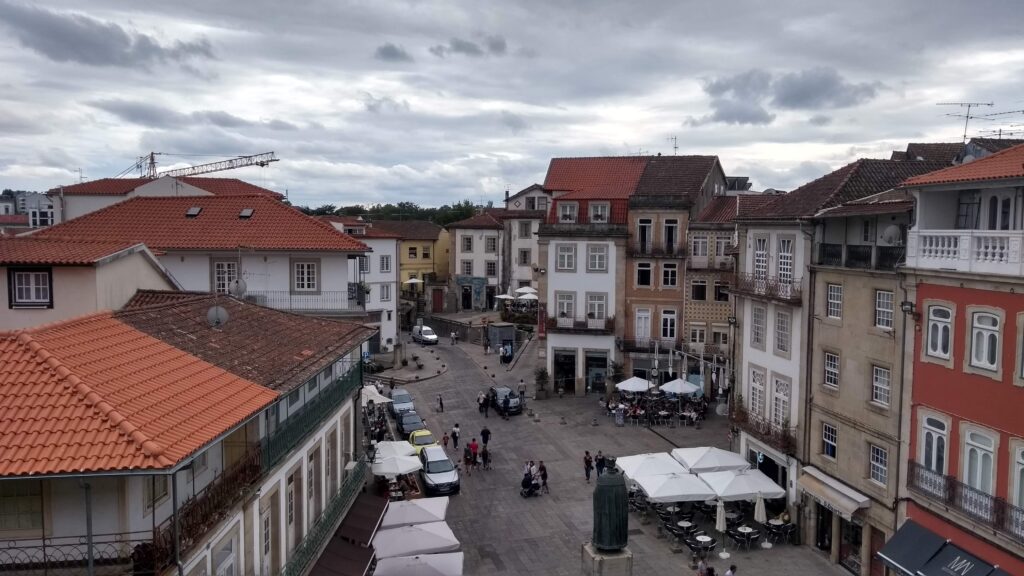Sintra as a royal summer residence
Picturesque royal palaces, a Moorish history, lots of wonderful buildings and parks in the nature of the Serra de Sintra. This is in a fast summarize why we call Sintra as a royal summer residence. A sort of paradise, a natural spa resort, in the mountains between Lisboa and the Atlantic Ocean. Almost every tourist, who visits Lisboa, wants to visit this UNESCO picturesque town. Read our post to learn what you have to discover over there and what is the best way to visit Sintra.
What are the topics of this post?
A Royal summer residence in a natural park
"The royals in a natural spa resort"
Sintra is a little town on a mountain, around 30 km away of Lisboa. It is located between the capital of Portugal and the Atlantic Ocean. A lot of famous buildings were summer residences of the royal family. Some others have an older history and had a military goal. Aside of these buildings, Sintra also has a lot of wonderful parks to discover and many viewpoints over the nature of the mountain. The whole area has the symptoms of a natural spa resort. This is one of the reasons why also other high placed peoples wanted their own residence in the picturesque Sintra. These days, Sintra is UNESCO World Heritage and a lot of buildings are part of Parques de Sintra.

National royal summer residence palaces
"The royals already loved the nature of Sintra"
National Palace of Sintra
"The oldest palace of Portugal"

In downtown Sintra stands the National Palace of Sintra. It is the oldest palace of Portugal, spans the entire history of Portugal and was built over many centuries. This means that the different buildings of this palace also have different styles. The oldest part already is from the 10th-11th century. The Moorish styles of the palace demonstrates this. Sintra and whole Portugal were under the rule of the Moors in this period. 2 Large chimney's of the royal kitchen characterize the outside of this wonderful royal palace.
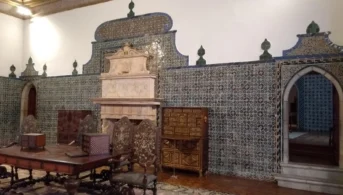

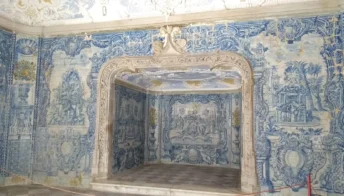
"A favorite destination for the Queens and Kings of Portugal"
The Queens of Portugal took care of the large territory of Sintra at the end of the Middle Ages. The Palace of Sintra was located in the heart of this territory. Also for the Portuguese monarchs was this palace a preferred destination. A first reason was due to the wonderful and cooler summer climate of the mountains near the Atlantic Ocean. Secondly, it was an ideal region for hunting. Finally, in the periods of the Plague in the capital they needed to protect themselves. These 3 reasons made the Palace of Sintra the most favorite summer residence for a lot of monarchs.
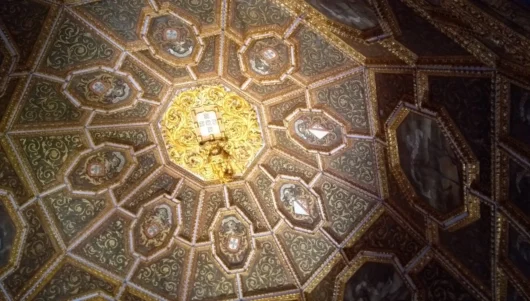
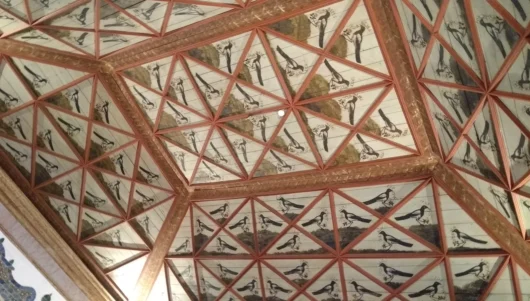
"Visit the way of living of many monarchs"
The National Palace of Sintra is a wonder to visit. Make a tour through the history and visit the oldest palace of Portugal. Discover and experience how the many monarchs and older cultures lived through a lot of centuries in Portugal. For me it is a must do when you travel to Sintra.
National Palace de Pena
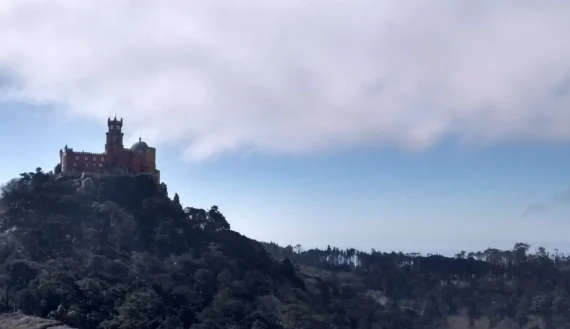
"Colorful Royal summer residence"
One of the most famous buildings of Sintra, is the National Palace of Pena, o Palácio de Pena. Located on the highest hill in the Serra de Sintra and with so many colors. This palace has some Disney allure. With the only difference, that people lived in the Palace de Pena. Yes, still at the end of the Kingdom of Portugal before Portugal transformed into a republic in 1910. Palácio de Pena also was a summer residence of the Portuguese monarchs. Since the institution of the republic in 1910, it is a national monument. This museum is a romanticist castle, UNESCO World Heritage and the most visited monument in Portugal. It also is 1 of the 7 wonders of Portugal.
"A history of a monastery, meditation and place for pilgrims"
The top of this mountain already has a huge history. Before this wonderful palace stood there, it was a place for monks, pilgrims and meditation. In the Middle Ages, there was a chapel built on this hill, dedicated to Our Lady of Pena. Later on, in the 15th century, there came a Sanctuary around it. Now this place became a place for pilgrims. King Manuel I of Portugal gave the order to built a monastery on the mountain. For many centuries it was a meditation place for a maximum of 18 monks. There came an end on this meditation place due to the earthquake of 1st November 1755. Almost whole Lisbon was destroyed and also the monastery on the highest mountain of Sintra. Afterwards, in 1842, they started to built a wonderful palace as a summer residence for the royal family with a large garden. In this garden, meditation still is possible. But yes, these days there are many tourists a whole year long to visit and discover this place. You will never be alone. It is possible to pass a whole day to visit the royal summer palace and the large park around it.
"A beautiful mix of neo-romantic styles"
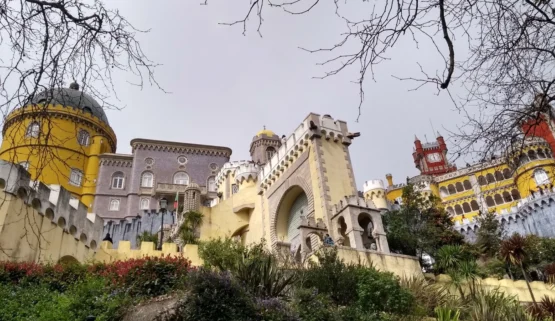
The Pena Palace, as you discover it these days, dates from the half of the 19th century. It is a good example of the exotic taste in the Romantic period. When you look at the architecture of the palace, it contains a mix of neo-Gothic, neo-Islamic, neo-Renaisance and the Portuguese famous neo-Manueline styles. For the good observators, they discover references of other famous Portuguese monuments in the Pena Palace.
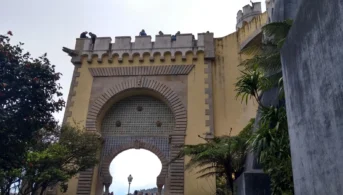

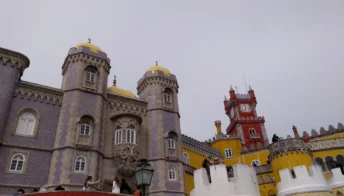
"An at least equally impressive park"
Most people are attracted by the wonderful Palace itself. And it is completely correct. I only can confirm this. The park around the palace is at least equally impressive and worth the effort your time. For me, visiting the park garden gave me the best example why this place was a meditation area in the past and why the Portuguese royal wanted to have their summer residence over here. The wonderful nature, climate and clean air. By experiencing these facts, I completely agree that Sintra is a natural open air spa resort.
Wait, if you thought you have seen all the wonders of Sintra, read further. There still are wonderful buildings and park garden coming lower in this post. What do you already think of the next one.
Park and Palace of Monserrate
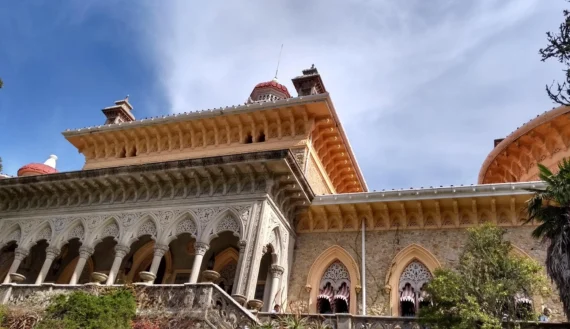
"From chapel to palace"
In the past there already stood a chapel devoted to Maria on this place. In 1540 there came a hermitage devoted to Our Lady of Monserrate, which was part of a large hospital of Lisboa. This hermitage was built because they were wondered about the hermitage of Montserrat near Barcelona, in Catalonia. After the earthquake of 1755, it was for many years an abandoned place until rich English people returned in the late 18th century. From that moment on, this place became a very popular travel destination for English tourists. In 1863, Francis Cook bought this area and gave the order to buy the current palace. It was the summer residence of the family Cook.
"Exotic oriental and romantic styles"
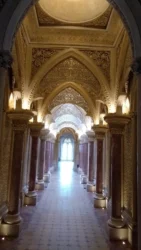
The palace has an exotic oriental appearance with a lot of Romantic, Moorish, Indian and neo-Gothic influences. A lot of the interior decorations also are extended to the exterior and are harmoniously connected with the wonderful garden around the building. According to many it is one of the most beautiful botanical gardens of Portugal.
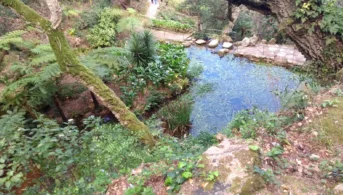
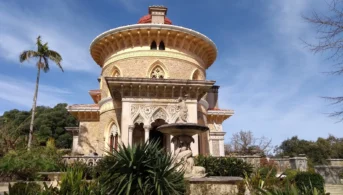
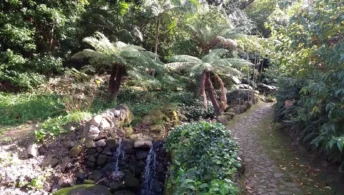
Queluz
"Rococo summer residence"

Between Lisboa and Sintra, we discover Queluz, still in the municipality of Sintra. Here stands the Palace of Queluz, also a royal summer residence. Palácio de Queluz is one of the last European famous buildings in Rococo style. This palace dates from 1747 and also known as the Portuguese Versailles. The garden around the palace is also a wonder to see.
Moorish castle
"Protect the region and Lisbon"
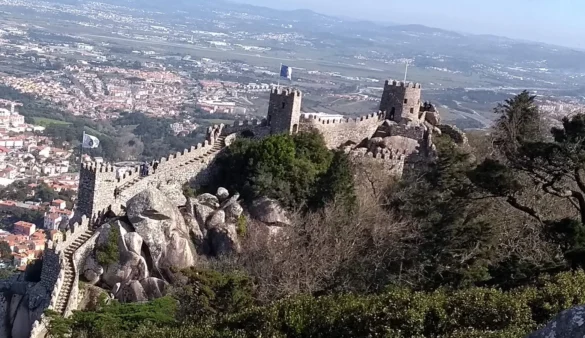
This castle stands prominent in the region and always had a strategic function. It is already 1000 years old, from the time when the Moors ruled the Iberian Peninsula. They built this castle to protect the whole area and the maritime access of Lisboa. Inside and around this castle lived a lot of people. Now it is known as the Islamic Quarter.
"From the Moors to the Kingdom of Portugal"


Till 1147, the Moors lived here. This year, the Christians conquered Lisboa. Sintra was handed over to the first King of Portugal, Dom Afonso Henriques. Now the Christians settled in the Moorish castle. The Islamic Quarter disappeared and the site became a Medieval town. From the 15th century, they left this area because there was no need anymore to protect themselves against the Moors or other folks.
"Restorations for a Medieval appearance"
In the 19th century, in the Romantic period, they already restored the castle under King Ferdinand II. The Medieval appearance and feelings around this castle came again alive. This was a start so we still can admire the walls and history of this castle.
Quinta da Regaleira
"Showcase of wealth in a wonderful labyrinth"
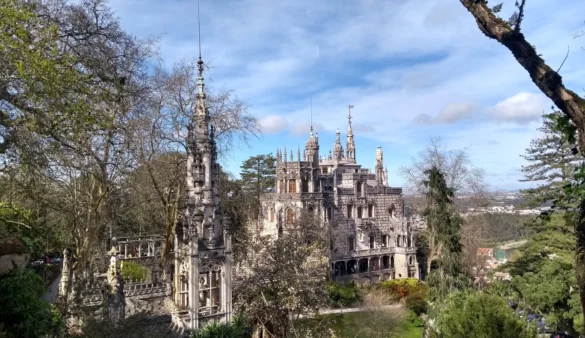
The Brazilian merchant in coffee and jewels António Carvalho Monteiro dos Milhões bought this ground at the end of the 19th century. He was so fascinated about the area of Sintra and also wanted a place in the middle of the royals to showcase his wealth. The Italian architect Luigi Manini constructed and decorated for him a Quinta in the Manueline style and a garden as a labyrinth on a site of 4 hectares.
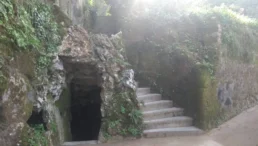

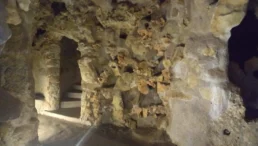
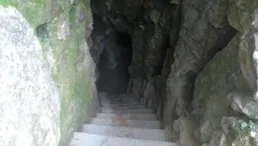
"Grottos, corridors and mystery"
The garden is built up with fountains, pavilions, winding trails, natural stairs, grottos, underground corridors and a lot of mystery anywhere in the park. When I visited this Quinta, I found out that it is a good idea to wear clothes that can get dirty and have a flashlight with you.
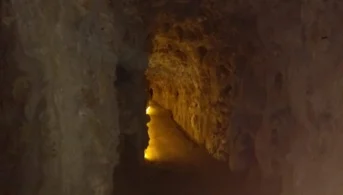
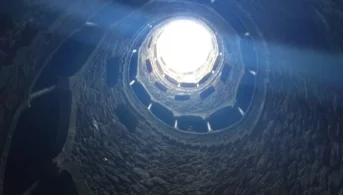
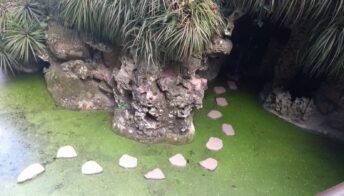
The convent of the Capuchos
"An ultimate austere life"
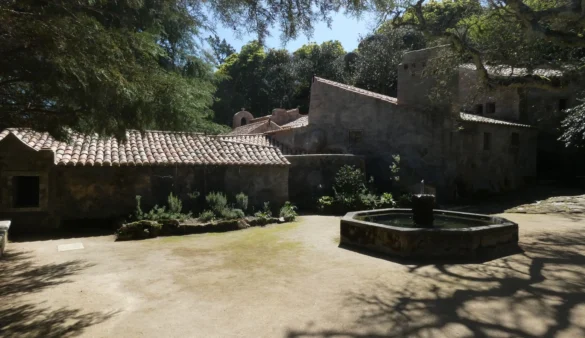
8 Monks who arrived from the convent of Arrábida founded this convent in 1560. The Capuchin monks followed the Franciscan rule and lived an ultimate austere life. The primitive community built a convent in the mountains of Sintra, in Colares. All the buildings over here remember to this time. Houses and rooms with a very small entrance. Only the basic facilities according to that time were present. The retired clergy lived together in this community until the religious orders were abolished in Portugal.
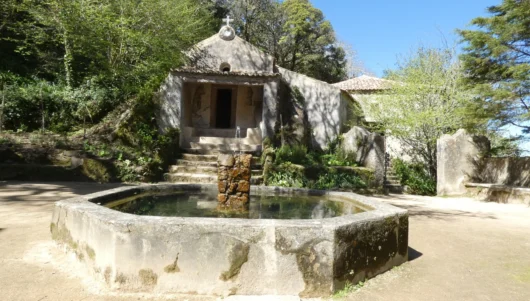
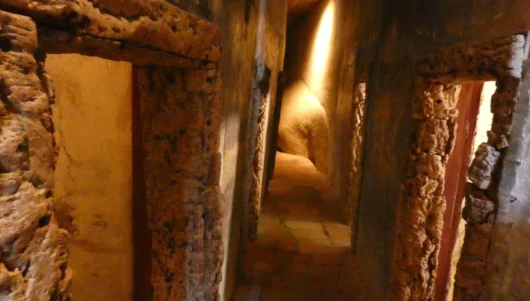
Queijadas de Sintra
"Cheese pastries"

The typical pastries of SIntra are made of cheese. They are made of fresh cheese, eggs, sugar, flower and cinnamon. It is inside a crispy pastry dough. A very nice pastry to taste when you are in Sintra. I found out that the best place to try these pastry in Sintra itself is in Piriquita.
"Convento da Penha Longa"
Originally, the first queijadas of Sintra were made in the Convento da Penha Longa. This was located in Linhó, a little bit out of the center of Sintra. This was a male convent of the Ordem de São Jerónimo. The original queijadas recipe would be without cinnamon and sugar, because the monks of this convent didn't knew these products.
Sintra at the Atlantic Ocean
"A natural park near the Atlantic Ocean"
"The most southwestern point of Europe"

Did you knew that Sintra is more than the town and the wonderful monuments? Sintra is located in the large Serra de Serra, which has a span to the Atlantic Ocean. Also Queluz and Colares are part of Sintra. Finally, also Cabo da Roca, near the Atlantic Ocean, is located in Sintra. This is the most western point of continental Europe. It is a wonderful place to visit.
"A swimming pool near the Atlantic Ocean"
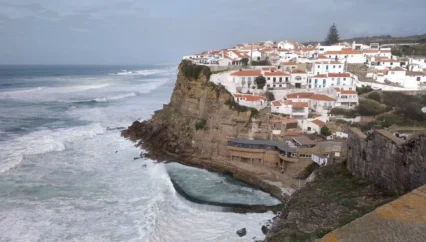
Another nice location to visit in Sintra near the Atlantic Ocean is Azenhas do Mar. A part of the town is built on the cliffs near the Atlantic Ocean, while at the beach you discover a nice natural swimming pool. In the summer, many people come to here to swim here. In the other times of the year, it is not a good idea to go in this sort of pool. Because the waves of the Atlantic Ocean may head over the ramparts. Don't make the mistake, this is the Atlantic Ocean, not a sea.
Vineyards in the sand of Colares
"Grapes in the sand"
Have you ever seen grapes and vineyards in the sand? In Colares you can. They have a unique wine. The grapes of the vineyards grow in the sand, and low to the ground. This region has a special climate, near the Atlantic Ocean. An extra positive point of the sand grounds is that aphids can't live in sand. So, the winemakers don't have to care about aphids plagues. The Adega Regional de Colares is the oldest wine cooperation in Portugal. You can visit the Adega Regional of Colares and taste this wine by yourself.
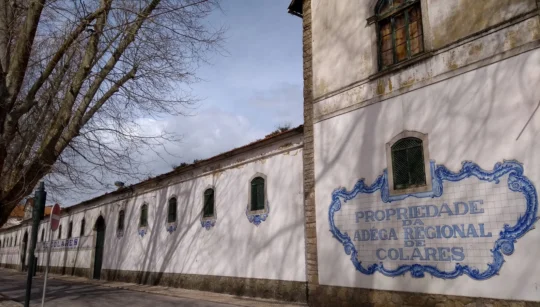
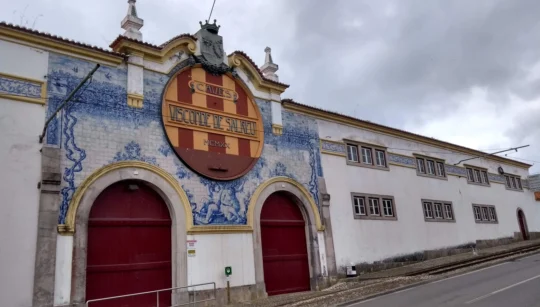
Travel to this picturesque royal summer residence Sintra
You completely are convinced to visit Sintra. Discover one of the 7 wonders of Portugal and a UNESCO World Heritage. Click on the buttons below to find your perfect flight to Lisboa and/or stay in this picturesque town which is one of the most wonderful places of Portugal. It is almost 40 minutes away from Lisboa, Lisbon. Don't wait any longer and feel yourself as a royal in this summer residence and natural spa resort in the mountains of Serra de Sintra.
Visit the monuments
"Go to the monuments"
By bus
When you arrive in Sintra, you can go to the most monuments by bus from the station. This is the most easy way to travel to the many palaces and the castle.
"Colares"
For Colares and the Atlantic coastline, taking the bus is the best option.
Walking
Some monuments are not far from the station. Because they re in the city center itself or on a 30-40 minutes walk away of the station. Keep in mind, Serra de Sintra are mountains. For example walking to the castle and Pena palace is possible in around 40 minutes. But, it will be very hilly. You will get a nice experience on your walk to the castle, but it is not for people who are not in good condition.
"Convento dos Capuchos"
The Capuchos convent is a wonderful place to visit. Because it is located in a more hidden place in the mountains, there is no bus connection directly to this location. A taxi can bring you there. Or you can walk in around 30-40 minutes through the park of Sintra from the Monserrate palace. Also from the Pena Palace, it is possible to walk to this convent. Keep in mind that you have to walk through the natural park. This is a hilly way and can be closed for safety reasons. For example, risk of fire in the summer period. Maybe it is better to avoid walking the way to Capuchos in the summer time.
How to reach?
"Arrive in Sintra"
By car
Sintra is around 30 km away from Lisboa. With a car you arrive in almost 30-40 minutes in Sintra. From the other sides, also are great ways to reach Sintra. So, you don't need to pass Lisboa if you arrive from the Silver Coast.
"Freedom to discover"
By train
From Lisboa you have a great train connection to Sintra. Whether you are in the historical center of Lisboa or not, it takes around 40-50 minutes to arrive in Sintra by train. Depart from Rossio, Oriente, Entrecampos or Sete Rios. Find out the time schedule on the website of CP.
Flight to Lisboa
Because Sintra is around 30 km away from Lisboa, it is worth to do as a nice trip if you stay in Lisbon. Keep in mind that it is not possible to see and experience everything in Sintra on 1 day. To visit all the wonders on a relaxed way, you have to make a separate city trip for Sintra itself. Book already your flight to Lisboa. In most cases, that is the first step to arrive in the region of the royal summer residence of Portugal.
Do you like this post?
Read More
"Selected for you"
You want to read more and get noticed about the posts ideal for you. Subscribe to our newsletter. This is the ideal way to stay tuned about all our posts and videos in the spotlight and selected for you.
The content of this page is copyright of Lindo Portugal.
© 2023 lindoportugal.eu
With media content of Galeria Sámuel.

